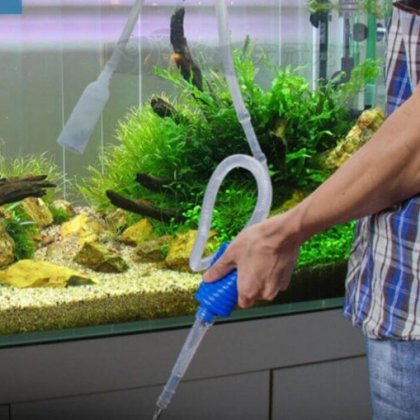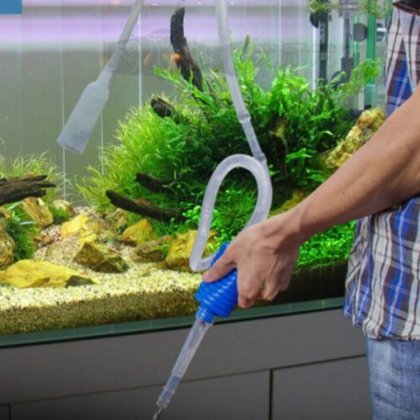|
Quick Facts :: Arapaima gigas |
|
|
Care Level: |
Expert |
|
Temperament: |
Semi-Aggressive |
|
Maximum Size: |
104" |
|
Minimum Tank Size: |
2500 Gallons |
|
Water Conditions: |
75-86° F, KH 8-12, pH 6.0-7.5 |
|
Diet: |
Carnivore |
|
Origin: |
Amazon, Orinoco River Basin |
|
Family: |
Osteoglossidae |
|
Species: |
Arapaima |
|
Aquarium Type: |
Cichlid-New-World |
Arapaima gigas Aquarium Care, Feeding and Native Habitat Information
Native Habitat and Species Information
Arapaima are found in the Amazon and Orinoco River of South America, where it is often found swimming near the water's surface of rivers, within flood plains where the water is very shallow and with low levels of dissolved oxygen. The Arapaima is a torpedo-shaped black fish with red markings, its scales are very large and it has an upturned mouth that it uses to gulp prey from the surface of the water. Arapaima are able to inhabit shallow water and waterways with low dissolved oxygen levels as they are an air breathing species that use a specially developed lung and swim bladder (which is rich in blood vessels) to breath oxygen from the surface, they are then able to stay submerged for up to 20 minutes. As this species typically reaches lengths between 6.5 to 8.5 feet in length and upwards of 200 lbs. in weight, it is not surprising that it is one of the largest freshwater fish species in the world. Despite the large size and weight of the species, Arapaima are found within the aquarium hobby. Arapaima require very large aquariums and filtration systems in order to be kept in captivity, which along with their immense size and weight make them suitable only for expert aquarists with very large aquariums and financial resources.
Aquarium Care
It should go without saying that Arapaima require very large aquariums with large filtration systems capable of handling the heavy bio-load of such a large fish. The large size of the Arapaima also means that its tank mates should be chosen wisely so that they do not become a meal. In addition to being very large, Arapaima aquariums should have a soft sandy substrate and plenty of room for the Arapaima to comfortably swim and turn around within the aquarium. Arapaima are known for swimming at or near the water's surface and will jump from the water for a variety of reasons ranging from attacking food to being startled or uncomfortable with their surroundings. Therefore, Arapaima aquariums should always be well covered in order to prevent the fish from jumping from the aquarium. Arapaima are an air breathing species and will need plenty of unobstructed access to fresh air and a supply of fresh air available at the water's surface. Thus, aquarium covers will need to be very sturdy in order to prevent jumping, while still providing access to plenty of fresh air at all times.
Breeding Information
Arapaima breeding cycle corresponds to the seasonal flooding that occurs within the Amazon basin. Arapaima lay their eggs between November and January, which allows their young to prosper in the shallow waters preying on insects and small fish. They build their nests in muddy or sandy bottomed areas, and as the water rises the eggs hatch allowing the offspring the flood season in which to feed in the shallow waters created by the abundant rain. By the later parts of the rainy season the growing Arapaima young will move further and further from the flood plains to the main river basins as they continue to grow in size. The arapaima male is a mouth brooder, like its relative the Osteoglossum spp. meaning the young are protected in its mouth until they are older. The female arapaima helps to protect the male and the young by circling them and fending off potential predators.
Feeding & Nutrition
Arapaima are a carnivorous predatory species and will eat a wide variety of meaty foods that will fit into its mouth, which due to the size of the Arapaima mouth is quite a large variety of prey items. In nature, the Arapaima diet consists of fish, crustaceans and even small animals. The Arapaima swims near the surface below low hanging trees where is will leap from the water to try and catch small animals and birds. Within the aquarium environment, the Arapaima is fed live fish, chopped fish, chopped meaty foods, meaty pellets or frozen foods like krill or crustacean meat.
No reviews found!

































No comments found for this product. Be the first to comment!